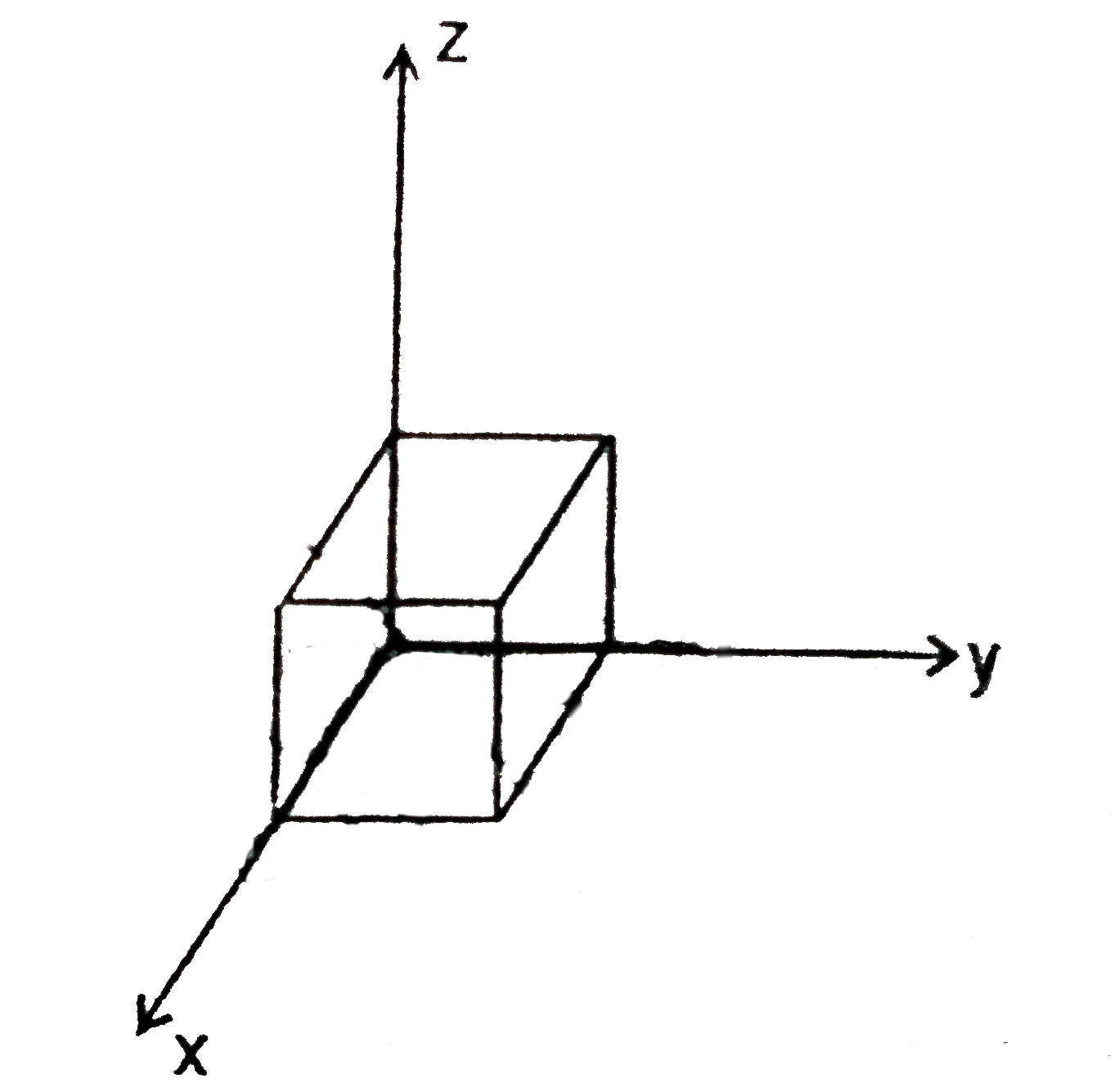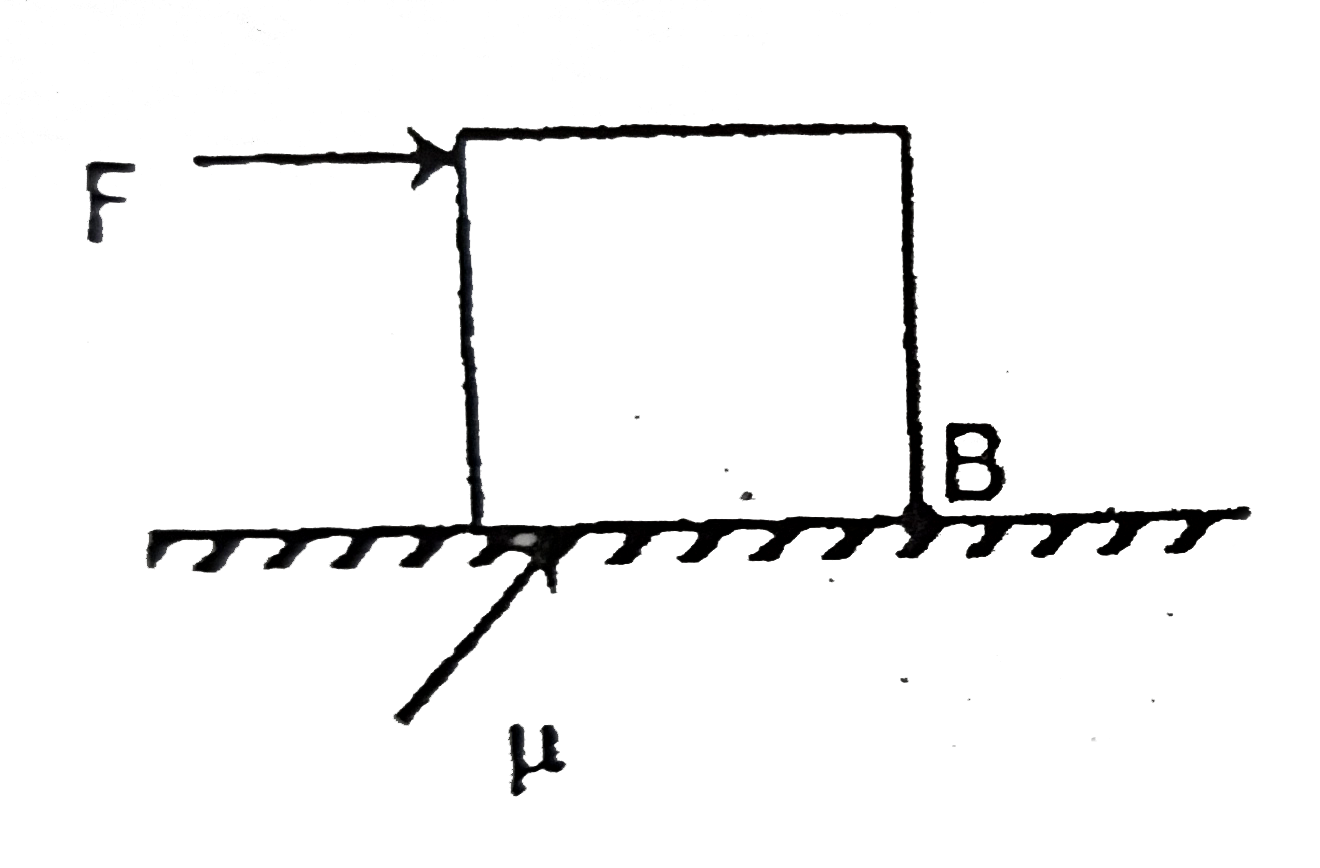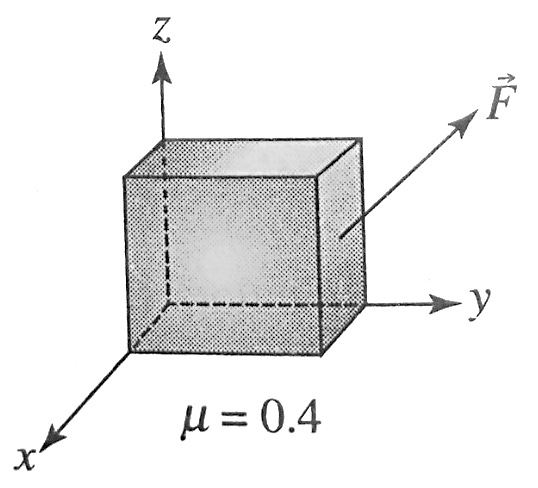A solid cube is placed on rough horizontal surface. The coefficient of friction between them is μ, where μ<12. A variable horizontal force is applied on the cube's upper face perpendicular to one edge and passing through midpoint of that edge. The maximum acceleration with which it can move without toppling is [Acceleration due to gravity 'g']
μg
2μg
g[1−2μ]
[12−μ]g
The correct Answer is:C
Topper's Solved these Questions
- ROTATIONAL DYNAMICS BOOK - AAKASH SERIESCHAPTER - ROTATIONAL DYNAMICS EXERCISE - PRACTICE SHEET (ADVANCED) More than One correct answer Type Questions
15 Videos
- ROTATIONAL DYNAMICS BOOK - AAKASH SERIESCHAPTER - ROTATIONAL DYNAMICS EXERCISE - PRACTICE SHEET (ADVANCED) Linked comprehension Type Questions
14 Videos
- ROTATIONAL DYNAMICS BOOK - AAKASH SERIESCHAPTER - ROTATIONAL DYNAMICS EXERCISE - LEVEL - II LECTURE SHEET (ADVANCED) Integer Type Questions
32 Videos
- RIVISION EXERCISEBOOK - AAKASH SERIESCHAPTER - RIVISION EXERCISEEXERCISE - MOTION IN A PLANE (LAMNI.S THEOREM)
6 Videos
- ROTATIONAL MECHANICSBOOK - AAKASH SERIESCHAPTER - ROTATIONAL MECHANICSEXERCISE - Questions for Descriptive Answers
20 Videos
Similar Questions
A solid cube is placed on a horizontal surface. The coefficient of friction between them is μ=0.25. A variable horizontal force is applied on the cube’s upper face, perpendicular to one edge and passing through the mid-point of edge, as shown in figure. The maximum acceleration with which it can move without toppling is (take g=10m/s2 )

View SolutionA solid cube is placed on a horizontal surface. The coefficient of friction between them is μ=0.25. A variable horizontal force is applied on the cube’s upper face, perpendicular to one edge and passing through the mid-point of edge, as shown in figure. The maximum acceleration with which it can move without toppling is (take g=10m/s2 )

View Solution
Knowledge Check
In the figure, a solid uniform cube is placed on a horizontal surface. The co-efficient of friction between them is μ where μ<12. A variable horizontal force perpendicular to one edge and passing through the midnight of that applied on the cube's upper face. The maximum acceleration with which it can move without toppling is
 AμgBg(1−2μ)2Cg(1−2μ)D(μ+12)g
AμgBg(1−2μ)2Cg(1−2μ)D(μ+12)gA solid cube of mass 2kg is placed on rough horizontal surface, in xy−plane as shown. The friction coefficient between the surface and the cube is 0.2. An external force 3ˆi+4ˆj+5ˆkN is applied on the cube. (use g=10m/s2)
 AThe block starts slipping over the surfaceBThe friction force on the cube by the surface is 3N.CThe frication force acts in xy-plane at angle 127∘ with the positive x-axis in clockwise direction.DThe contact force exerted by the surface on the cube is 15N.
AThe block starts slipping over the surfaceBThe friction force on the cube by the surface is 3N.CThe frication force acts in xy-plane at angle 127∘ with the positive x-axis in clockwise direction.DThe contact force exerted by the surface on the cube is 15N.
A solid cube is placed on a horizontal surface. The coefficient of friction between them is μ=0.25. A variable horizontal force is applied on the cube’s upper face, perpendicular to one edge and passing through the mid-point of edge, as shown in figure. The maximum acceleration with which it can move without toppling is (take g=10m/s2 )

View SolutionA uniform rod ABC of mass M is placed vertically on a rough horizontal surface. The coefficient of kinetic friction between the rod and the surface is μ.A force F (>μmg) is applied on the rod at point B at distance l/3 below centre of the rod as shown in figure. The initial acceleration of point A is

View SolutionA solid cube of mass 2kg is placed on rough horizontal surface, in xy−plane as shown. The friction coefficient between the surface and the cube is 0.2. An external force 3ˆi+4ˆj+5ˆkN is applied on the cube. (use g=10m/s2)

View SolutionA cubical box of side length L rests on a rough horizontal surface having coefficient of friction μ. A variable horizontal force F=αt is applied on the top of the block as shown in figure, where α is a constant and t is time. The coefficient of friction is sufficient so that the block does not slide before toppling. The graph between torque due to normal reaction about end B and time before toppling start is

View SolutionA cubical box of side length L rests on a rough horizontal surface having coefficient of friction μ. A variable horizontal force F=αt is applied on the top of the block as shown in figure, where α is a constant and t is time. The coefficient of friction is sufficient so that the block does not slide before toppling. The graph between torque due to normal reaction about end B and time before toppling start is

View Solution
A solid cube of mass 5 kg is placed on a rough horizontal surface, in xy-plane as shown. The friction coefficient between the surface and the cube is 0.4. An external force →F=6ˆi+8ˆj+20ˆkN is applied on the cube. (use g=10ms2)
View Solution
